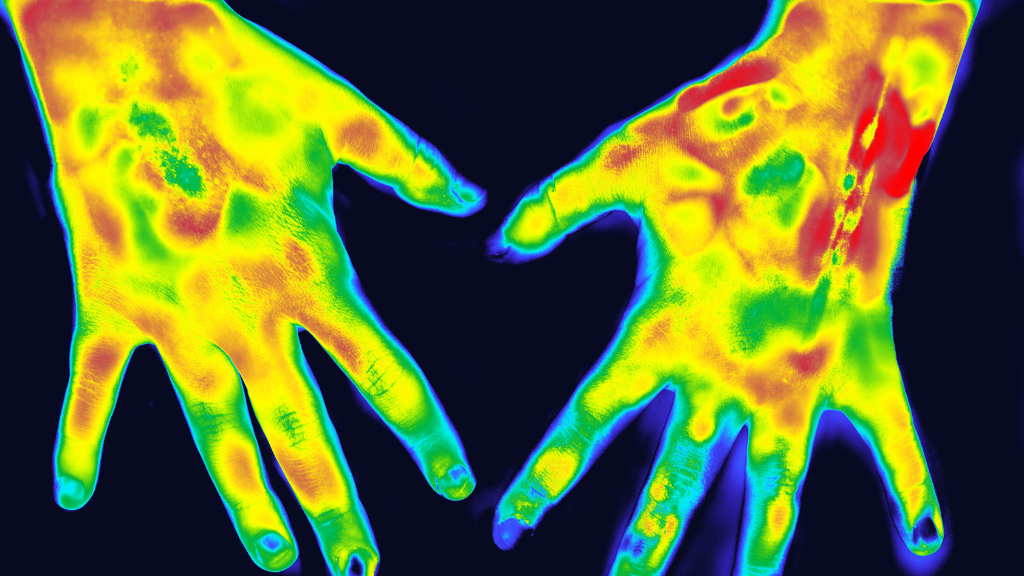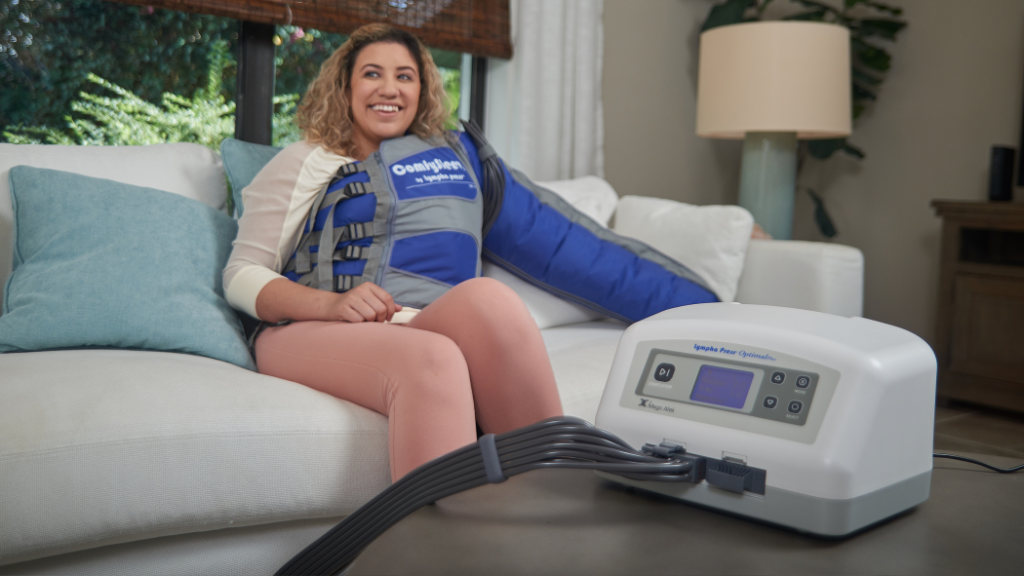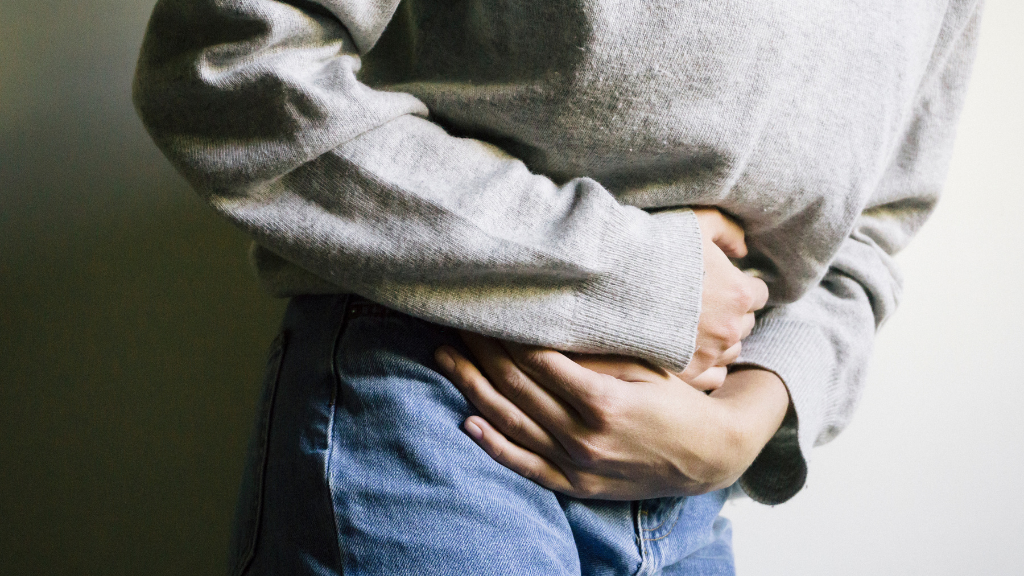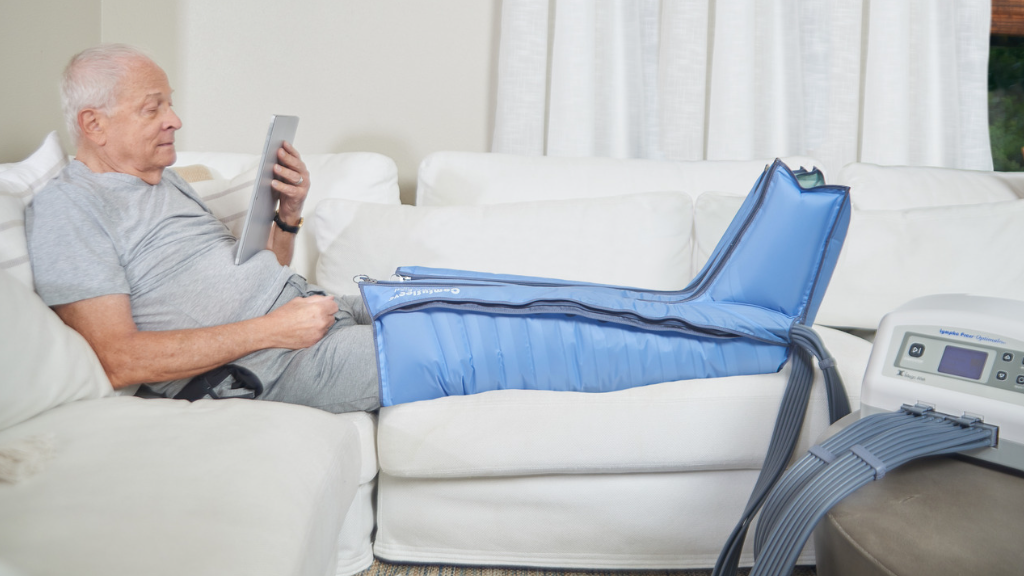No products in the cart.
Explore
Contact Us.
We're ready to help.
Looking for more information, or to be connected with your local representative?
We can help. Fill out our contact form to get started.
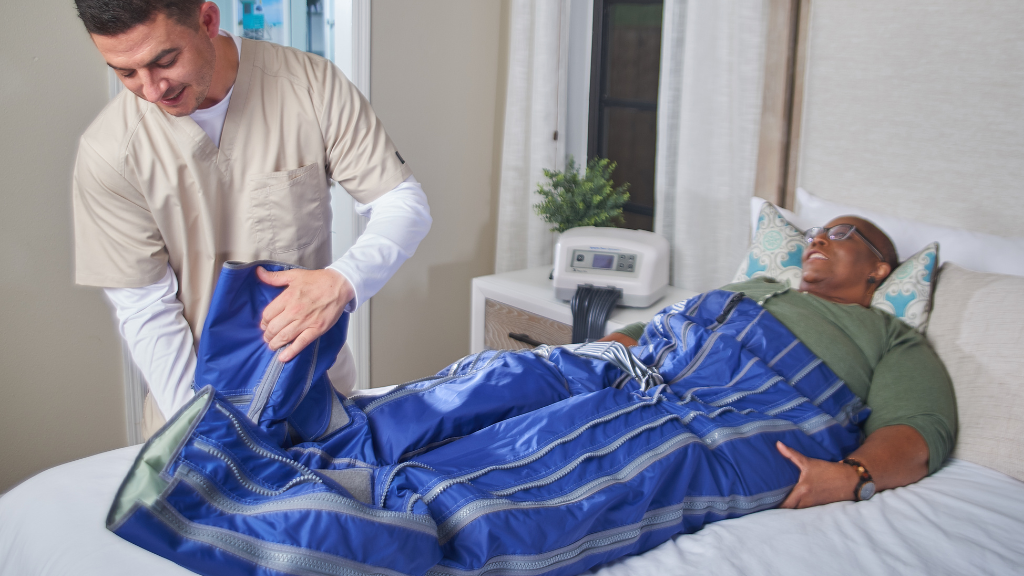
28
Aug
Improving Outcomes Before Lymphatic Surgery With Decongestive Therapy and Intermittent Pneumatic Compression
Based on the webinar With Dr. Corrado Campisi and Elena Parodi
This is a 20-minute read.
During a recent lymphedema webinar, Lympha Press was honored to host Dr. Corrado Campisi and Elena Parodi, where they spoke about their innovative research regarding decongestive therapy and intermittent pneumatic compression (IPC) prior to lymphatic surgery.
This article summarizes the webinar and shares important implications for practicing lymphedema professionals. Below, the article begins with background information about Campisi and Parodi, then highlights key details about the research study. Finally, you’ll read a Q&A with these lymphedema professionals for a deeper dive into pressing questions about their work improving outcomes for people with lymphedema.
What is the Campisi Clinic?
Founded in 1978, the Campisi Clinic in Genoa, Italy, is known for leading the field in providing lymphatic care via evidence-based therapeutic and surgical approaches. The clinic’s research on the use of the Campisi Method, also known as the Campisi Approach for Lymphatic Surgery, supports decongestive therapy to prepare the patient for lymphatic microsurgery. This is a prime example of the innovative work conducted at the Campisi Clinic.
Dr. Corrado Campisi, MD, PhD, MRM, is the head of plastic surgery at the Campisi Clinic. He completed his medical training at the University of Genoa, specializing in reconstructive and aesthetic surgery. He continued on to earn a PhD in experimental surgery and microsurgery. Dr. Campisi is a widely respected leader in lymphatic care and a member of the European Society of Lymphology and the International Society of Lymphology.
Elena Parodi, PT, COMT, CMPT, is a physiotherapist at the Campisi Clinic and a member of the clinical team who conducted this research study. She studied at Genoa University in Italy before joining the Campisi Clinic in 2021. At the clinic, she works with a team of doctors, physiotherapists, podologists, and nurses to provide optimal lymphedema treatment for patients.
During the live educational seminar, these guest speakers shared their findings on the use of intermittent pneumatic compression (IPC) in addition to complete decongestive therapy(CDT) as part of an intensive prehab program. They discussed how using IPC with traditional CDT approaches would maximize patient safety and positive surgical outcomes.
About the Research Study
While CDT approaches vary across the world, many lymphedema clinicians and patients recognize that they may be lengthy, time-consuming, and costly. The Campisi Clinic set out to find a better way, aiming to understand which elements of lymphedema treatment are most effective in preparing patients for surgery for the best possible post-surgical results.
Multiple lymphatic-venous anastomoses (MLVA) microsurgery is a surgical approach where lymphatic-venous shunts bypass lymphatic vessel obstructions through 2 to 3-centimeter incisions in the groin, axilla, and throughout the affected limb. Patient participation in prehabilitation therapies is fundamental to reducing fluid in the lymphatic limbs before MLVA microsurgery.
In addition, findings suggest that reducing limb volume decreases the risk of fluid overload before and after surgery, thus enhancing safety and post-surgical outcomes. During the prehab phase, surgeons and therapists work closely to determine and apply intensive decongestive techniques to maximize fluid reduction outcomes.
The Campisi Clinic conducted a randomized controlled trial examining the use of IPC with CDT compared to CDT alone to reduce lower extremity fluid volume in adults preparing for MLVA microsurgery. The researchers aimed to provide evidence and insight into best practices for lymphatic prehab.
About the Study Participants
To determine if they were a candidate for this study, patients were first seen by a lymphatic specialist for an initial evaluation. Next, they underwent lymphoscintigraphy studies. This imaging illustrates the lymphatic structures and drainage patterns to show areas of lymphatic flow and potential blockages in the extremities.
Understanding drainage patterns will set the stage for informed surgical and therapeutic plans. The imaging is also used to calculate a transport index (TI) score in which scores of less than 9 are considered normal and greater than 9 are pathological. These scores were used to classify the study participants’ current lymphedema and further analyze patient outcomes after one year.
Treatment and Control Group Experiences
After a patient was identified as an appropriate study participant and candidate for MLVA surgery, they were randomly assigned to either the treatment or control group.
Patients in the control group received CDT treatment before their MLVA microsurgery. The CDT treatment provided during this study included 45 minutes of manual lymphatic drainage (MLD) every 48 hours, bandaging of limbs every 48 hours, and at least 20 minutes of aerobic exercises daily. Patients in the treatment group received 2 hours of IPC daily in addition to control group CDT treatments (MLD, bandaging, and aerobic exercise).
The intensity and duration of prehab services varied based on unique physician recommendations for each lymphedema case. For example, some patients were asked to participate in therapy one time per week for three months, others to participate daily for two to three consecutive weeks, and others participated somewhere within those ranges.
For this study, the Campisi team used Lympha Press’s Lympha Pants and Optimal Plus compression pump for the IPC treatment. This IPC tool is a wearable pant-like garment with 24 air chambers that connect to the compression pump to provide 20-90 mmHg of pressure.
Following MLD principles, the Lympha Press device first applies pressure to the trunk and then gradually moves to the distal extremities. This pattern prepares the rest of the body to receive fluid from the edematous extremities.
Results of the Study
An optoelectronic perometer was used to measure participants’ limb volumes before prehab and again following 12 consecutive days of prehab treatment. After participating in their prehab programs, patients in the treatment group who received IPC treatment had a significantly greater reduction in limb volume before surgery.
Participants in the IPC treatment group averaged an 11.7% decrease in limb volume, compared to a 5% decrease in the CDT-only control group. Maximum volume loss for all patients was observed after 44 days of prehab.
Overall, the study supported the use of intermittent pneumatic compression in addition to usual CDT approaches in prehab programs for lymphatic microsurgery. Using IPC in prehab treatments maximizes patient preparedness for surgery and supports post-surgical recovery potential.
Questions Answered: A Deeper Understanding of the Campisi Prehab Approach
After sharing an overview of their research study and its results during the webinar, the two experts graciously spent time answering audience questions. The following Q&A shares more specifics on the Campisi Method treatment, its implications, and recommendations for lymphatic care.
How long was MLD provided during prehab treatment, and which MLD patterns are best?
Dr. Campisi explained that the MLD patterns were individualized based on each patient’s imaging. The lymphoscintigraphy imaging provided information about a patient’s lymphatic drainage and accessible lymphatic pathways. This information was used to tailor MLD patterns to each lymphedema case. In general, MLD sessions lasted 45-60 minutes.
Parodi also shared that their therapists frequently used an LPG/Endermologie® machine before providing MLD techniques. The LPG machine is used as a preparatory technique to break up harder tissues, like those affected by fibrosis, to maximize fluid drainage with MLD. It can also be used post-operatively before putting on IPC devices.
Do you recommend bilateral MLD and IPC treatment or targeting only the surgical limb?
Dr. Campisi explained that CDT approaches should be applied to all areas of the body affected by lymphedema. However, because patients present with different forms and presentations of lymphedema, it is important to use well-rounded, informed, and bilateral treatment approaches.
He shared the example of a patient with impaired deep lymphatic functioning but normal superficial functioning. Usual MLD or IPC treatments alone will not help the deep system dysfunction—only muscle movement or surgery can do that. But, it is still important to use IPC and MLD in addition to deep system treatments because the superficial and deep lymphatic systems are interconnected and influence each other.
Similarly, the lymphatic system is interconnected throughout all areas of the body. Applying drainage techniques beyond the surgical limb is important to support the function and flow of the entire system. Dr. Campisi also noted that their clinic regularly works with patients with multi-site lymphedema who are planning multiple limb surgeries. Though, surgically, each limb is treated in stages, therapeutic CDT is continuously provided to all areas to maximize outcomes.
How long should IPC and CDT therapies be used in the Campisi Method?
The goal of prehab is to eliminate excess fluid in the limb before surgery, and the goal of microsurgery is to open blocked lymphatic pathways. Continuous decongestive therapies ensure patients go into surgery in the best possible condition.
At the Campisi Clinic, patients stay for at least four weeks in total. During this time, they complete two weeks of intensive daily prehab, undergo surgery, recover for one week, and then complete one to two weeks of rehabilitation. Dr. Campisi stressed that doing MLD alone would not have fully prepared clients for surgery in that intensive two-week prehab period. In addition, he emphasized that fluid reduction is especially more significant when receiving IPC in addition to traditional CDT approaches.
Which pressure settings are recommended for Lympha Pants with IPC?
The answer to this question is highly dependent on the patient and their specific case of lymphedema, according to Dr. Campisi. He shared that it’s important to apply enough pressure so that the IPC is therapeutic, taking into consideration the patient’s specific clinical presentation.
Therapists should first consider which lymphatic system level needs treatment. The three levels of the lymphatic system are:
- Level 1 = superficial fascia
- Level 2 = deep fascia/superficial venous system
- Level 3 = deep system within the muscles
Clinicians should then adjust the IPC pressure to meet their patient’s diagnostic and prognostic needs.
What is the post-surgical protocol in the Campisi Method?
Generally, Dr. Campisi does not recommend rehabilitation for at least one week after the MLVA microsurgery procedure. Because new lymphatic passages were opened during surgery, there is a risk of fluid draining at the surgery site if these pathways are overwhelmed or overtaxed. Therefore, therapists and surgeons should work closely when deciding to restart IPC and CDT treatments.
Typically, Dr. Campisi suggests that IPC can be applied at home or in the clinic one to two weeks after surgery for two to three hours per day. Patients continue daily IPC use for two to six months after surgery, beginning at a low-pressure range (approximately 20-25 mmHg) and building up pressure as indicated. Follow-up visits to monitor progress also occur during that time. According to Dr. Campisi, other post-surgical lymphatic rehabilitation protocols largely depend on the type of surgery. He explains, “Your surgeon and clinical team will tailor post-surgical protocols to match your specific case and rehabilitation needs.”
The Campisi Clinic defines a positive result to intervention as providing clients with the quality of life they desire after their MLVA surgery. After one year, the clinic has its patients repeat lymphoscintigraphy imaging to reevaluate their lymphatic structures and drainage patterns.
Dr. Campisi and his team also ask patients about their lifestyle choices around lymphedema management. Have they stopped wearing their recommended compression stockings? Are they doing a lot more standing, flying, or other activities? Are they consistently using their IPC device?
Dr. Campisi highlighted that patients are humans who need and deserve to live their lives fully. He explained that’s why they are seeking out the surgery.
After the intensive prehab, surgery, and recovery process, the Campisi team works with the patient to make a long-term plan. This plan supports their desired quality of life and is tailored to their individual lymphedema management preferences.
Key Takeaways for Practicing Lymphedema Professionals
As a lymphedema professional, what can you take away from the information presented above? Here are some final thoughts based on our experts’ insights and the research presented in the webinar.
First, using multiple therapeutic decongestive approaches will lead to better and faster results in reducing limb volume. The Campisi team concluded that IPC played a particularly strong role in maximizing preparedness for surgery and post-surgical outcomes. They isolated IPC therapy in the study to highlight its importance to prehab. In practice, Dr. Campisi and his team support applying as many tools and interventions as possible to increase and expedite patient results and recovery.
Second, the Campisi Clinic is a major proponent of incorporating aerobic exercise into prehab and post-surgical programs. They highlight exercise’s role in muscle activation to address deeper levels of the lymphatic system while supporting overall health.
Finally, after seeing IPC’s successful use as a prehab intervention, clinicians can safely transfer its therapeutic benefits to nonsurgical lymphedema patients. The use of IPC in lymphedema treatment should be tailored to each specific patient’s needs and clinical presentation.
This study achieved its goal of highlighting how important IPC is for maximizing fluid drainage in patients with lymphedema. Dr. Campisi and the entire research team have clearly demonstrated the potential of IPC as a powerful tool for lymphedema management.
For More Information
If you missed the live webinar but would like to view it now, please follow the link to the full webinar. You can also view other educational webinars produced in partnership with Lympha Press, plus additional online programming for lymphedema patients and professionals.
In addition to educational webinars, Lympha Press provides pneumatic compression therapy options. These products offer scientifically documented symptom relief to help people thrive with lymphedema.
Share this post
Related Posts...
Explore
Contact Us.
We're ready to help.
Looking for more information, or to be connected with your local representative?
We can help. Fill out our contact form to get started.


